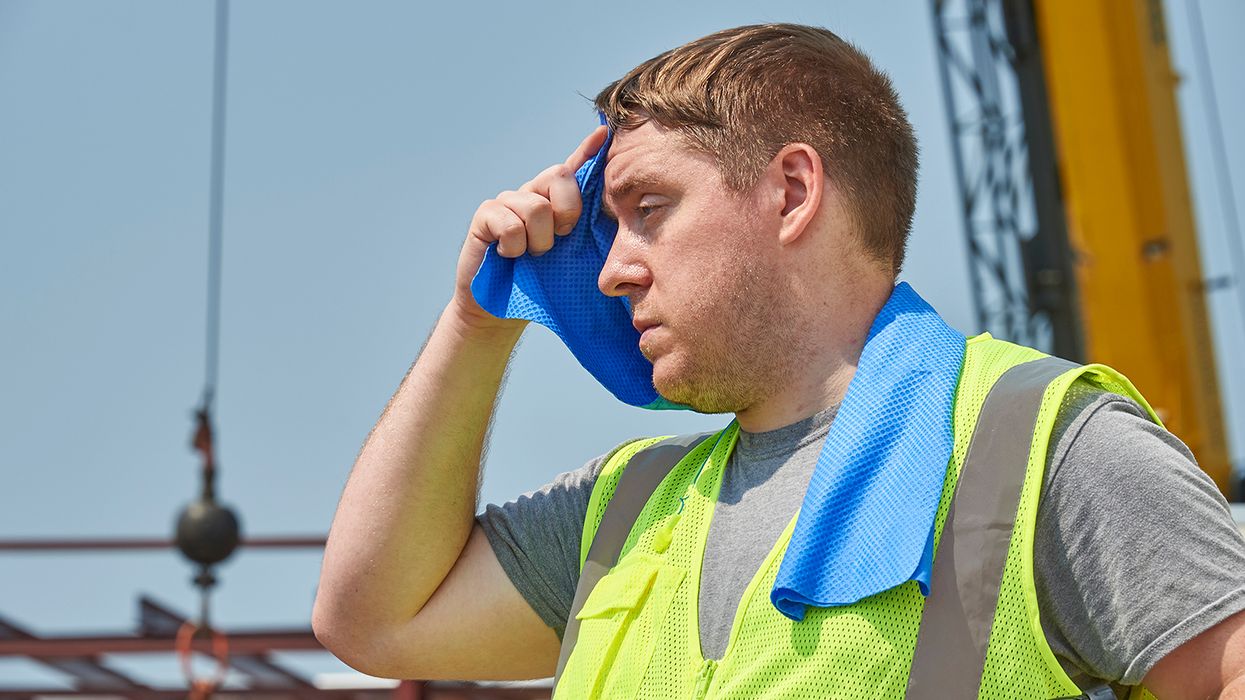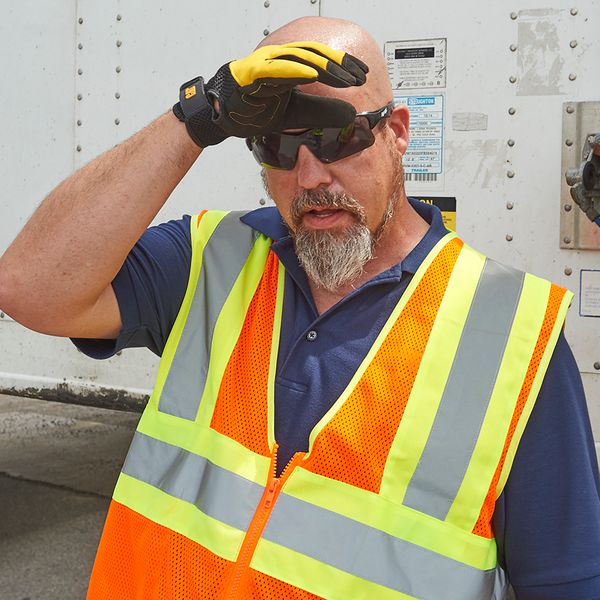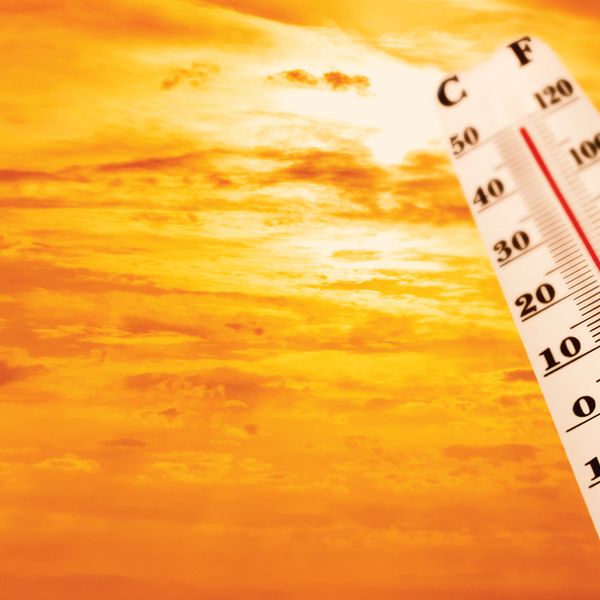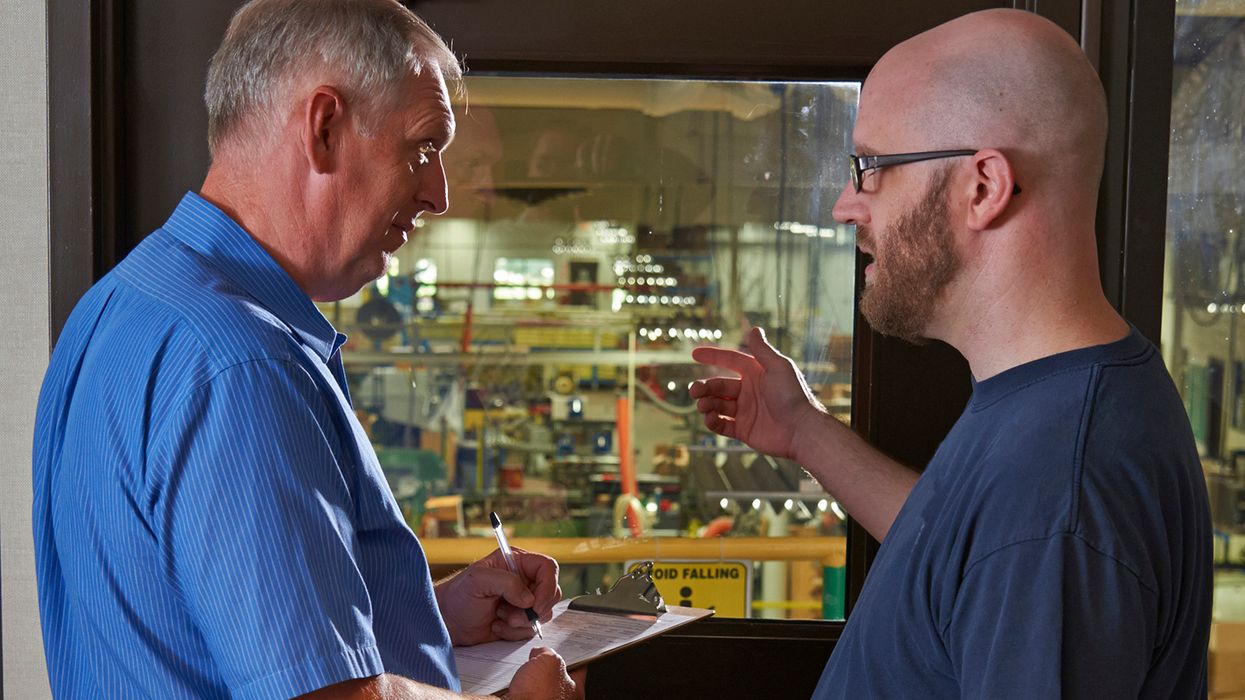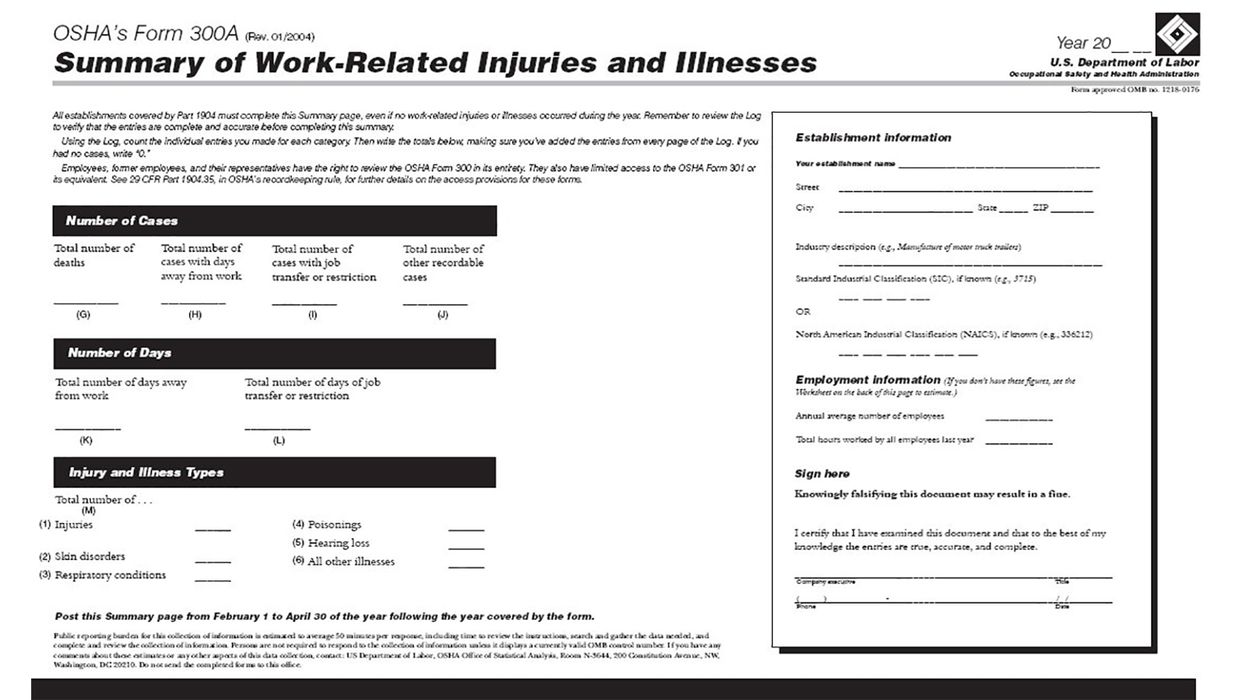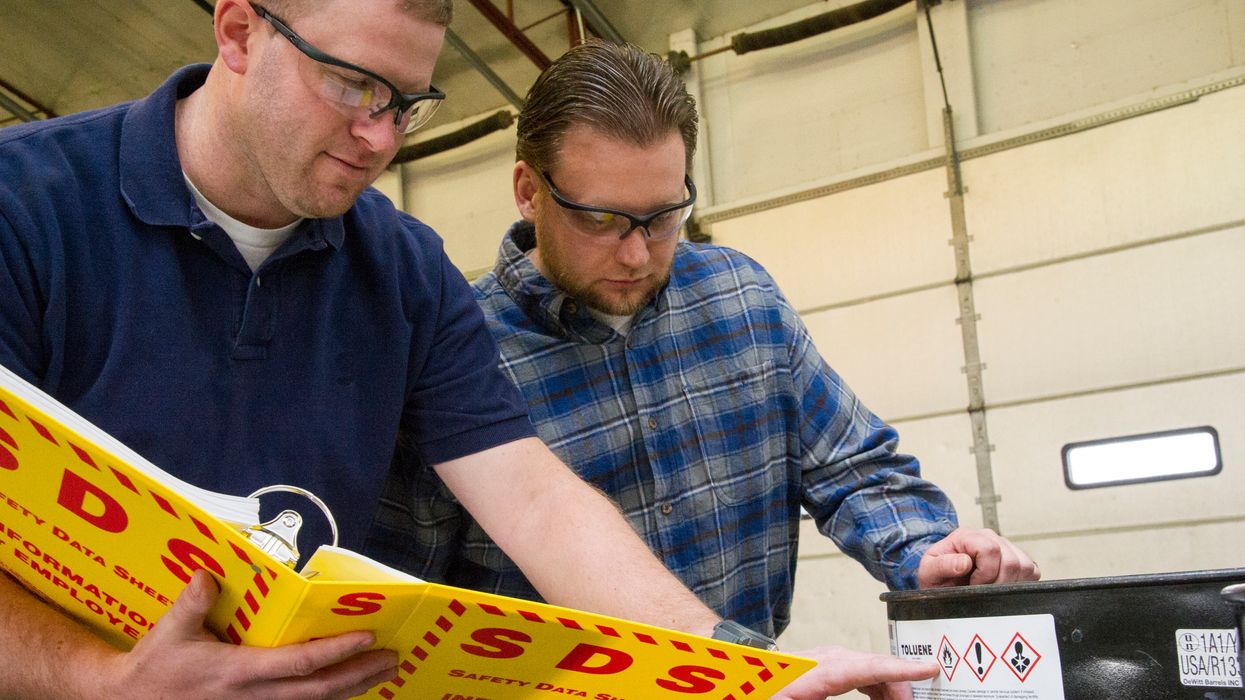Employee Handout — Heat Stress
Working in the heat can put extra strain on your body. With some understanding of how the body reacts to heat, you can prevent heat-related disorders.
What are the risk factors?
Below are personal risk factors that vary by individual:
- Age,
- Weight,
- Degree of physical fitness,
- Metabolism,
- Medications,
- Use of alcohol or drugs,
- Water consumption, and
- Caffeine consumption.
Environmental
Environmental risk factors also play a role in heat-related stress, including:
- Air temperature,
- Humidity,
- Radiant heat from the sun and other sources,
- Conductive heat sources,
- Air movement,
- Workload severity and duration; and
- Protective clothing.
Keep in mind, another factor is whether or not you are acclimated to the heat. By gradually being exposed to working in hot conditions, your body develops a greater tolerance for the heat.
Can personal protective equipment add to the hazard?
Yes, sometimes heavy or impermeable protective clothing can contribute to a worker’s exposure to the heat. However, there are specialized types of PPE that can be worn under other types of protective clothing to cool workers, such as ice vests, water-cooled garments, and air supply systems.
Work practices can help control heat hazards
A more common technique is to wear wet clothing, headbands, or bandannas. Other work practices that help control exposure to the heat include:
- Using intermittent rest periods to recover from the heat.
- Drinking about 5 to 7 ounces of fluids every 15 to 20 minutes to replenish body fluids.
- Using relief workers.
- Using the buddy system (work in pairs) when working in hot conditions.
- Pacing the work or reducing the physical demands of the work.
- Providing cool recovery or shaded rest areas.
- Scheduling work for cooler times of the day or when heat producing equipment isn’t being operated.
- Wearing light, loose-fitting, breathable (like cotton) clothing.

